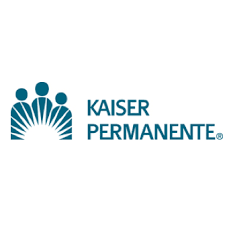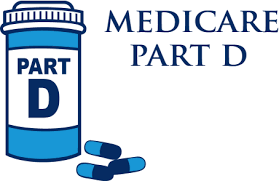Each year, the Kaiser Family Foundation conducts a survey to examine trends in employer-sponsored health benefits. This article summarizes the main points of the 2024 Employer Health Benefits Survey.
Health Insurance Premiums
In 2024, the average premiums for employer-sponsored health insurance were $8,951 for single coverage and $25,572 for family coverage. The average single and family premiums increased by 6% and 7%, respectively, over the last year, similar to the previous year (7% each).
Additionally, the Kaiser report notes an increase of 4.5% in workers’ wages and inflation of 3.2%. The average premium for family coverage has risen 24% over the last five years, compared with a 28% increase in workers’ wages and a 23% rise in inflation.
Premiums under high deductible health plans with savings options (HDHP/SOs) were still lower than the average premium. HDHP/SOs’ annual premiums for single and family coverages were $8,275 and $24,196, respectively.
Conversely, on average, the premiums for workers enrolled in preferred provider organization (PPO) plans were higher than others. The average PPO premium was $9,383 for single coverage and $26,678 for family coverage in 2024.
Worker Contributions
The average worker contribution toward premiums was 16% for single coverage and 25% for family coverage in 2024, slightly lower than 2023’s percentages.
In terms of dollar amounts, workers contributed $1,368 and $6,296 toward their premiums for single coverage and family coverage in 2024, respectively. Once again, these numbers were slightly down from 2023, but greater than five years ago.
Plan Enrollment
Enrollment figures were reasonably similar to last year’s. The following were the most common plan types in 2024:
- PPOs: 48% of workers covered
- HDHP/SOs: 27% of workers covered
- Health maintenance organizations: 13% of workers covered
- Point-of-service plans: 11% of workers covered
- Conventional (indemnity) plans: 1% of workers covered
Self-funding
In the past few years, self-funded plans have become more popular. Many large organizations self-fund or pay for some or all health services for their workers directly from their own funds rather than purchase health insurance. In 2024, 63% of covered workers—including 20% at small firms and 79% in large firms—were enrolled in self-funded plans. The percentage of covered workers in self-funded plans in 2024 was similar to 2023.
Employee Cost Sharing
Most workers must pay a share of their health care costs, and the average deductible for single coverage was $1,787 in 2024, similar to last year’s number. The average annual deductible is similar to the deductible amount five years ago and 47% higher over the past decade.
The percentage of covered workers with a general deductible of $2,000 or greater for single coverage has increased by 5% over the last five years.
Beyond deductibles, most workers cover some portion of the costs of their health care services. For example, 59% of covered workers had coinsurance, and 16% had a copay for hospital admissions. The average hospital admission coinsurance rate was 21% in 2024; the average payment amount was $343.
In addition, nearly all workers were covered by a plan with an out-of-pocket maximum (OOPM), but the costs varied considerably. Among covered workers with single coverage, 14% had an OOPM of less than $2,000, and 24% had an OOPM of $6,001 or more.
Availability of Employer-sponsored Coverage
While nearly all large firms (those with 200 or more workers) offer health benefits to at least some workers, small firms (three to 199 workers) are significantly less likely to do so. In 2024, 54% of all firms offered some health benefits, which was similar to last year’s percentage (53%).
Although the vast majority of workers are employed by firms offering health benefits, many aren’t covered by their employers. Some are not eligible to enroll, while others choose not for various reasons. Overall, 81% of workers were eligible for health benefits at firms that offer coverage, and 75% of eligible workers took up the organization’s offer. That works out to be 61% of workers at firms that offer health benefits enrolling in coverage.
Among firms that offer health benefits and firms that do not, 54% of all workers were covered by health plans offered by their employer. This is similar to last year’s percentage.
Health Promotion and Wellness Programs
Many firms have programs that help workers identify health issues and manage chronic conditions. The 2024 Kaiser report highlights the following programs:
- Health risk assessments—Among organizations offering health benefits, 31% of small firms and 56% of large firms provided workers the opportunity to complete a health risk assessment, similar to last year. Of large firms that offer a health risk assessment, 54% used incentives or penalties to encourage workers to complete the assessment, lower than the percentage (59%) in 2023.
- Biometric screenings—Similar to last year’s trend, in 2024, workers at 9% of small firms and 44% of large firms were given the opportunity to complete a biometric screening. Among large firms with a biometric screening program, 65% use incentives or penalties to encourage workers to complete the assessment, similar to last year (67%).
- Health and wellness promotion programs—Organizations offer these programs to help employees improve their lifestyles and avoid unhealthy habits. Most employers—54% of small and 79% of large—offered a program in at least one of these areas: smoking cessation, weight management, and behavioral or lifestyle coaching. These figures are slightly lower than last year’s.
Abortion Services
The U.S. Supreme Court’s decision in Dobbs v. Jackson, overturning Roe v. Wade, and subsequent state activity to regulate abortion has increased interest in coverage for abortion services in employer plans. In the 2024 survey, 29% of large firms (those with 200 or more workers) that offered health benefits said that legally provided abortions are covered in most or all circumstances, and 18% said legally provided abortions are only covered under limited circumstances (e.g., rape, incest, or health or life endangerment of the pregnant enrollee). The majority of employers (45%) answered “Don’t know” to the prompt, perhaps reflecting the complexity of the issue and the changing landscape of state laws.
A small percentage (5%) of large firms offering health benefits provide or plan to provide financial assistance for travel expenses for enrollees who travel out of state to obtain an abortion if they do not have access near their home.
GLP-1 Drug Coverage for Weight Loss
Glucagon-like peptide 1 (GLP-1) receptor agonists have grown in popularity due to their effectiveness in helping individuals to lose weight. GLP-1s such as Ozempic and Mounjaro are approved to treat Type 2 diabetes but are also in high demand for off-label weight-loss use. Others, including Wegovy, are approved for qualifying individuals to treat obesity.
In the 2024 survey, 18% of firms with over 200 employees reported covering GLP-1s when used primarily for weight loss. Of these firms, 53% required a specific condition or had a requirement for coverage. These included meeting with a professional (dietitian, psychologist, case worker or therapist) or enrolling in a lifestyle or weight loss program.
Of firms that covered GLP-1s for weight loss, 36% said that covering these medications will have a “significant impact” on their prescription drug spending. However, 16% said covering GLP-1s will be “very important” for employee satisfaction with their health plan.
Conclusion
As expected, the average annual premiums for both single and family coverage significantly increased in 2024 due to the economy’s impact on health benefits. Inflation and wages have already started to moderate in 2024 and are projected to continue to do so over the coming years. However, health care costs are projected to rise again in 2025. Employers should begin identifying tools and resources to offset higher premiums and offer robust mental health support.
For more information on benefits offerings, contact us today at Inspire Workforce.





